- Home
- TV History
- Network Studios History
- Cameras
- Archives
- Viewseum
- About / Comments
Skip to content


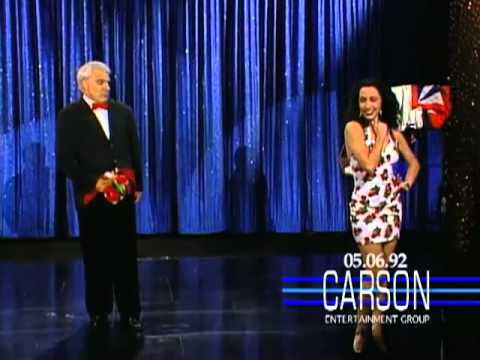

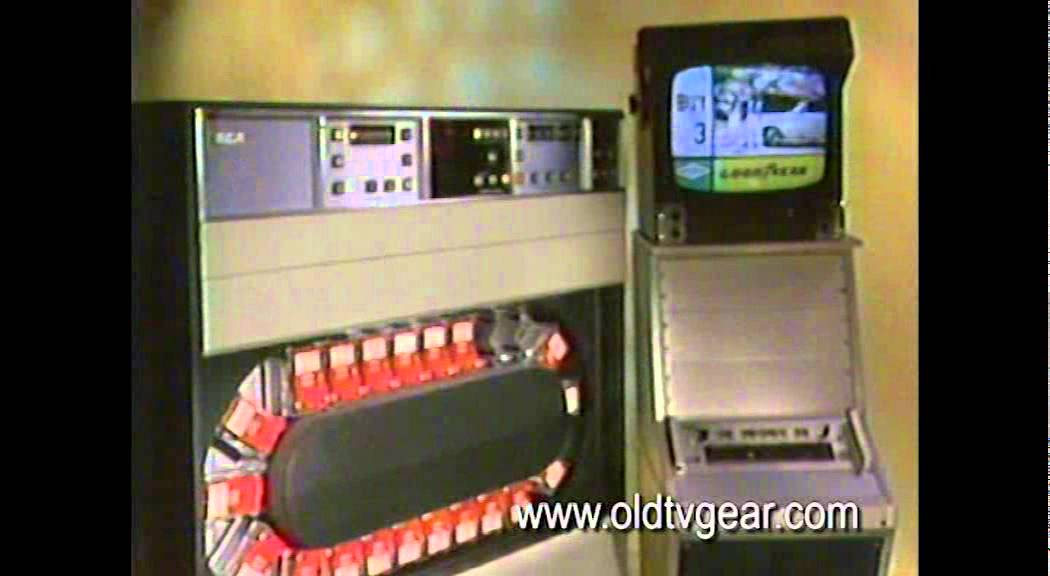

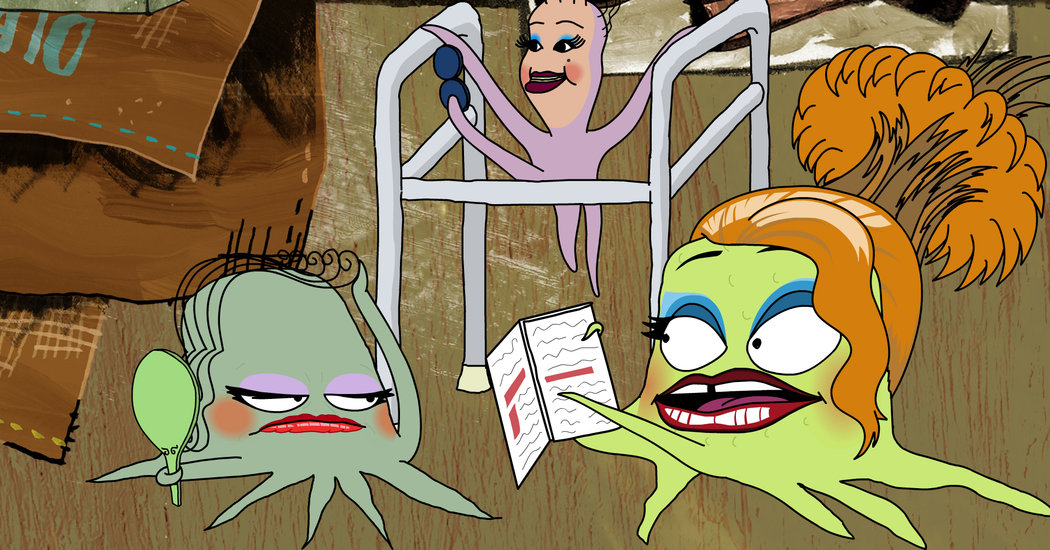

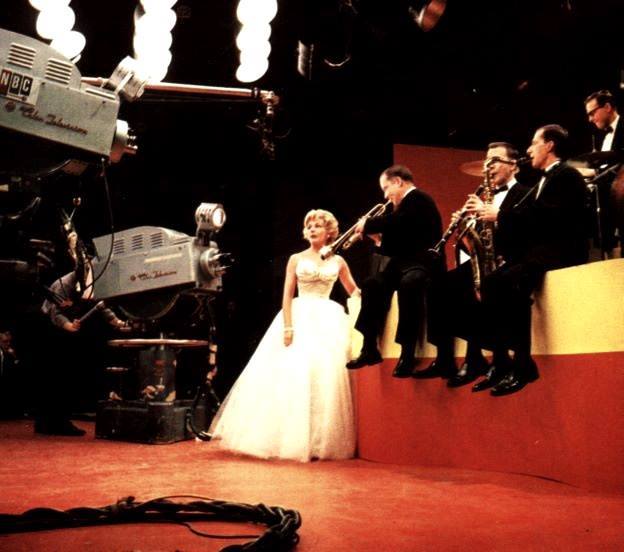

July 10, 1950…The Original, TV Music Countdown Show Debuts…
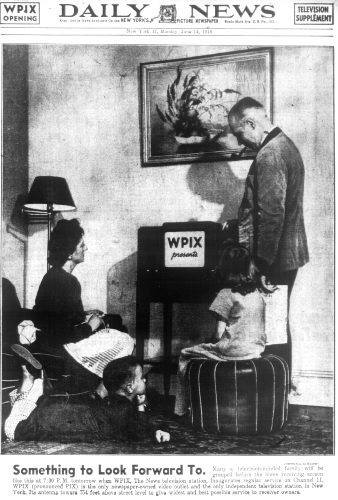

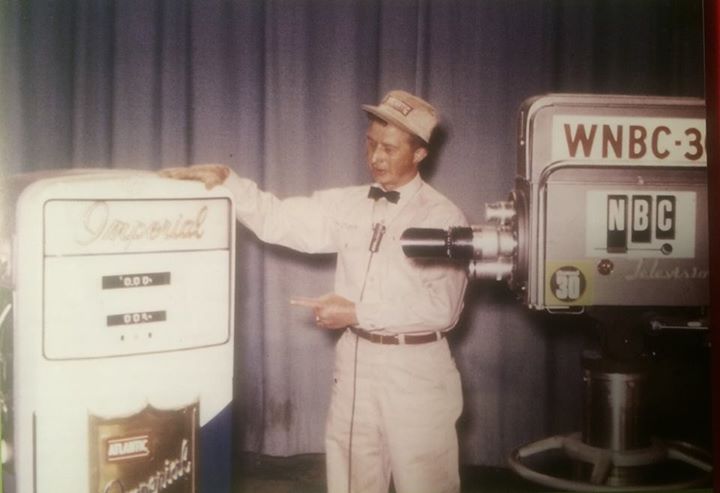





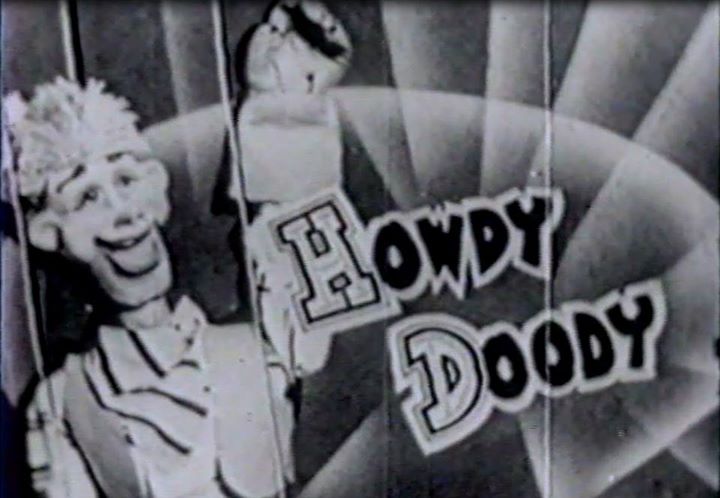

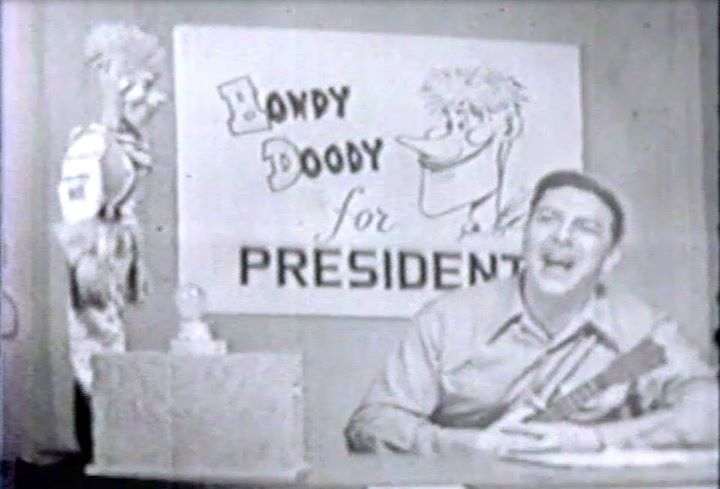

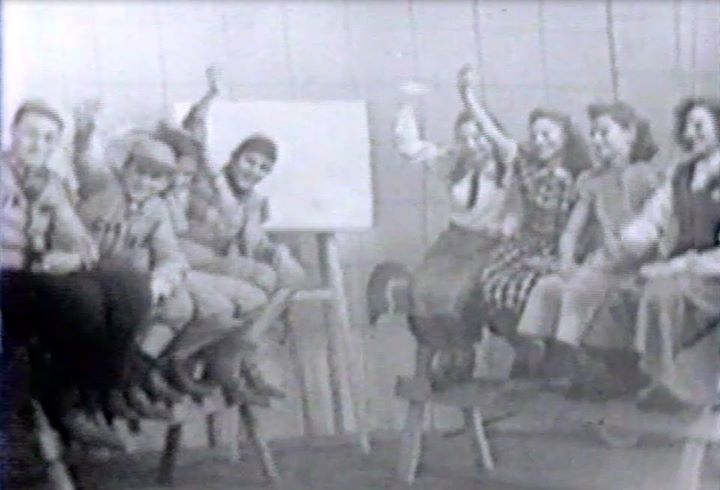
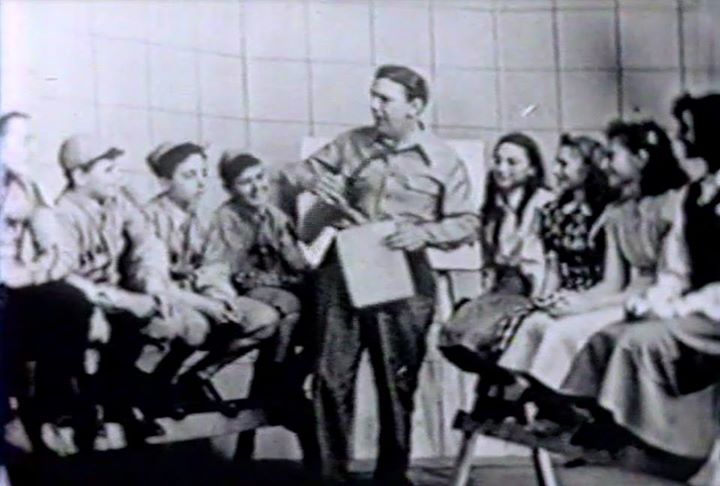
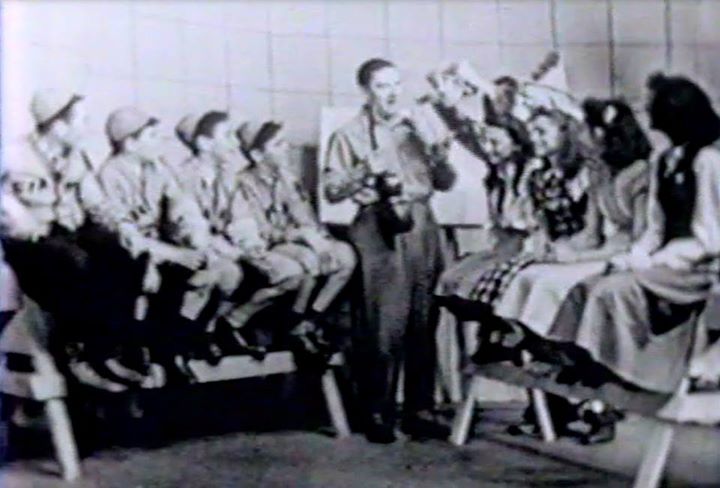
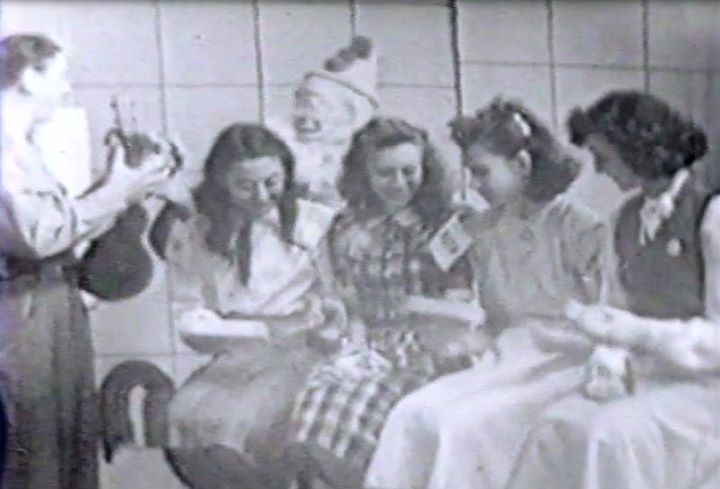
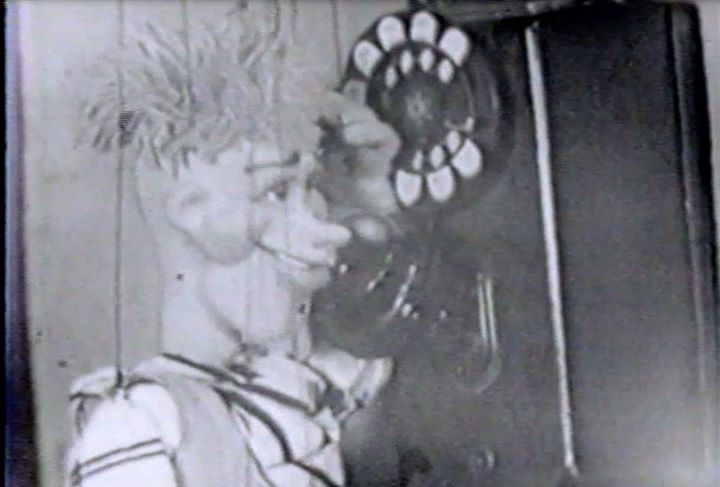


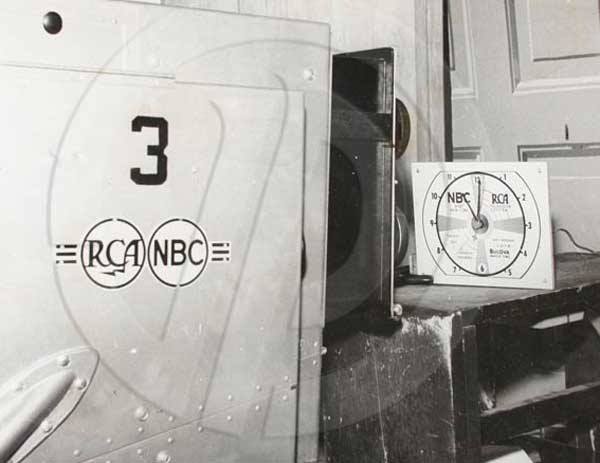

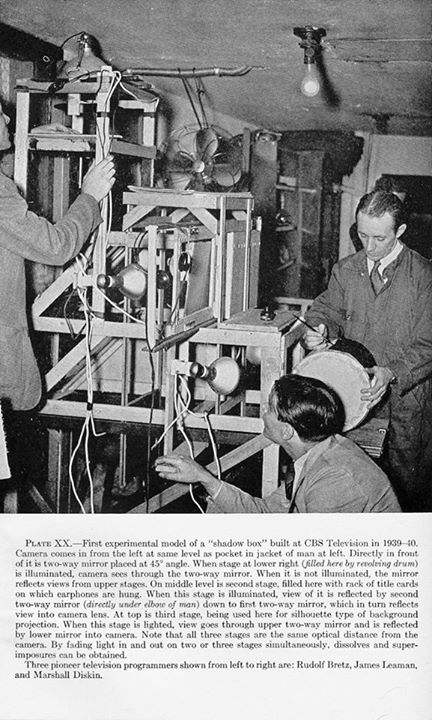

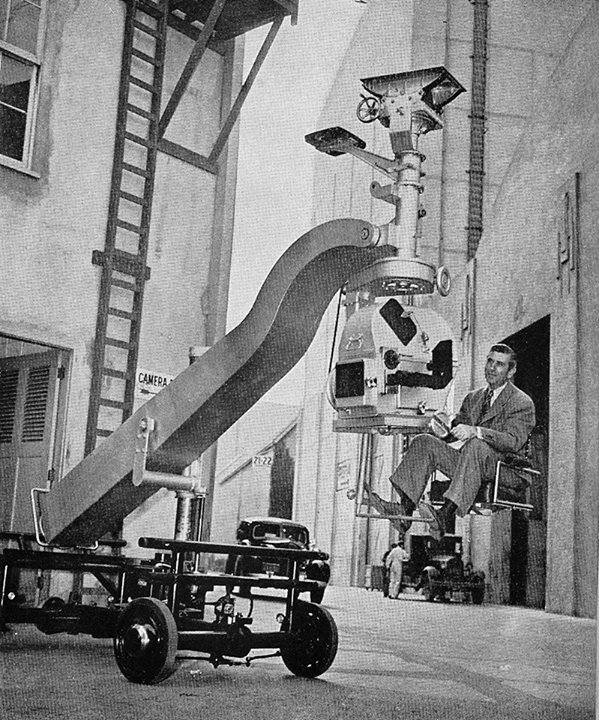

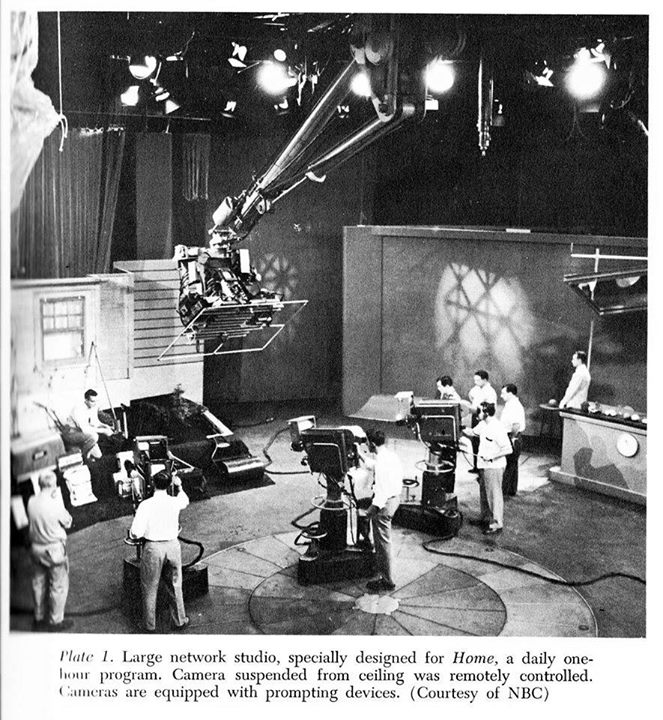

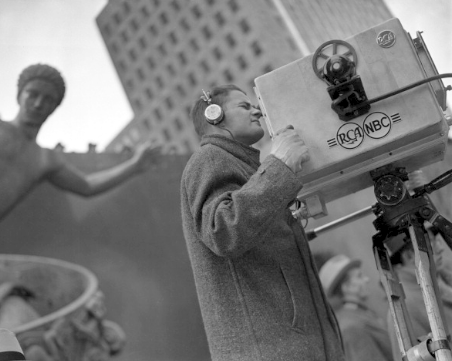

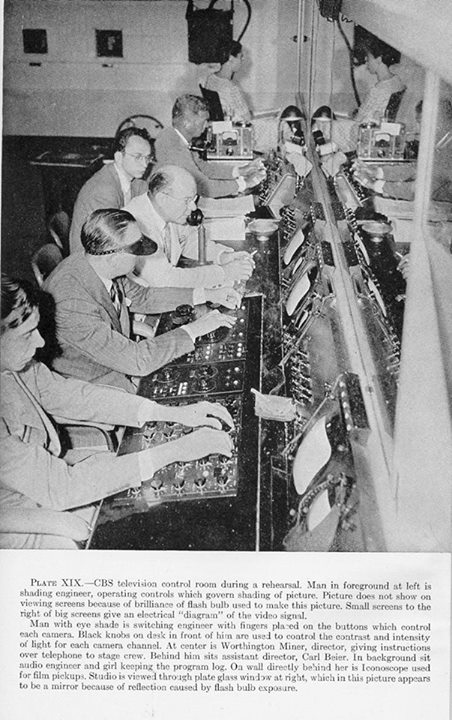

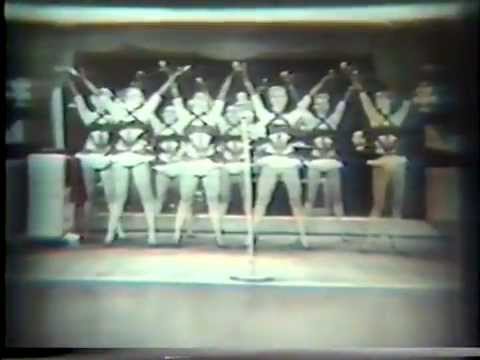



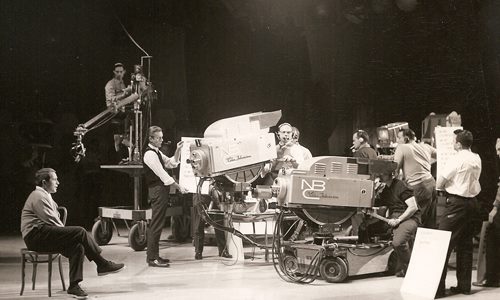

Posts in Category: TV History
Page 21 of 136
« Previous
1
2
3
4
5
6
7
8
9
10
11
12
13
14
15
16
17
18
19
20
21
22
23
24
25
26
27
28
29
30
31
32
33
34
35
36
37
38
39
40
41
42
43
44
45
46
47
48
49
50
51
52
53
54
55
56
57
58
59
60
61
62
63
64
65
66
67
68
69
70
71
72
73
74
75
76
77
78
79
80
81
82
83
84
85
86
87
88
89
90
91
92
93
94
95
96
97
98
99
100
101
102
103
104
105
106
107
108
109
110
111
112
113
114
115
116
117
118
119
120
121
122
123
124
125
126
127
128
129
130
131
132
133
134
135
136
Next » 

July 14, 1933…Popeye Comes To The Silver Screen
On July 14, 2016
- TV History
July 14, 1933…Popeye Comes To The Silver Screen
This is the first of 109 cartoons Popeye starred in from 1933 until 1942. Newspaper cartoonist E. C. Segar is the man who created Popeye, but before he came along, Olive Oyl had been the star of his “Thimble Theater” comic strip, and had been since the strip debuted December 19, 1919…10 years before Popeye was created on January 17, 1929. The sailor man was an instant hit and Segar’s creation character became one of the top funny paper characters in the country.
When Popeye came to the silver screen, he needed a voice and for the first two years, that was done by Billy Costello, but he was replaced in 1935 by Jack Mercer. Olive Oyl was originally voiced by none other than the voice of Betty Boop, May Questel, but when producer Max Fleischer moved operations to Miami from New York in 1938, Questel didn’t want to move, so Margie Hines took over. In 1943, Paramount moved the operation back to New York and May Questel once again became the voice of Olive.
William Pennell was the original voice of Bluto, but he too declined to move to Florida, but when Paramount moved the operation back to NYC, he took over again. While they were in Miami, Gus Wickie was the voice of Bluto.
Thanks to the animated shorts, Popeye became even more of a sensation than he had been in comic strips. As Betty Boop gradually declined in quality as a result of Hays Code (movie sex police) enforcement in 1934, Popeye became the studio’s star character. By 1936, Popeye began to sell more tickets and became the most popular cartoon character in the country in the 1930s…beating Mickey Mouse. Well blow me down! -Bobby Ellerbee


Forgotten Gem! Steve Martin’s “The Great Flydini” Sketch…CLASSIC!
On July 13, 2016
- TV History
Forgotten Gem! Steve Martin’s “The Great Flydini” Sketch…CLASSIC!
That “wild and crazy guy”, Steve Martin, has done so much great work, for so long, it’s easy to have missed some of his sketches. Even though I am a big fan, I had not seen this till recently. This is one of the best pieces of comedy I’ve ever seen, and I hope you’ll enjoy this as much as I do. -Bobby Ellerbee
http://www.thebeamreport.com


RCA TCR-100 Videotape Cartridge System, Sales Reel
On July 12, 2016
- TV History
July 1970…The RCA TCR 100 Video Cart System Debuted
Some loved it, some hated it, but this was a real innovation, and came a full 2 years before the Ampex ACR 25. Thanks to Barry Mitchell for the reminder. -Bobby Ellerbee


‘Squidbillies’ Is Still Blazing a Caustic, Backwoods Trail
On July 10, 2016
- TV History
My Show…”Squidbillies” Season 10 Debuts Tonight!
For those of you that don’t know, I am the voice of The Sheriff on the “Squidbillies” which has been the top rated show on Adult Swim since we started in 2006. (FYI: at night, Cartoon Network becomes Adult Swim).
It is rare for my character to not be in an episode, but tonight, Sheriff and I will be at my house watching the wild, and crazy shenanigans the New York Times attributes to us, with great pride.
It’ll be fun night in Dougal County, Georgia ya’ll. Congratulations to all my fellow voice mates, our producers, artists and sound engineers on 10 great years, and thanks for inviting me on this trip!
-Bobby Ellerbee
‘Squidbillies’ Is Still Blazing a Caustic, Backwoods Trail
The Adult Swim series returns for a 10th season, and lipstick will never be the same, while “Duck Dynasty,” on A&E, lacks spontaneity.
July 10, 1950…The Original, TV Music Countdown Show Debuts…
“Your Hit Parade”
On July 10, 2016
- TV History
July 10, 1950…The Original, TV Music Countdown Show Debuts
“Your Hit Parade” was television’s first ever Top Ten type music show, and radio’s too. It started on the NBC Red Network on April 20, 1935 and ran there till 1955. The television version started on NBC on this day in 1950 and ran there till ’58 when it went to CBS for a year.
In the great photo below, we see one of the show’s biggest stars, Dorothy Collins singing before the cameras at NBC’s Ziegfeld Theater, in color. The show started July 10, 1950 in NBC’s brand new Studio 6A which was converted from radio to TV on May 29, 1950.
The show needed more floor space for the 10 song scene sets, and the next year it moved to NBC’s brand new 8H which was converted to television on January 30, 1950. The show was done in color occasionally from The Colonial Theater, but went all color in 1956 when it moved to Perry Como’s new home at the Ziegfeld Theater. As a side note, the 4 RCA TK41s at the Zeigfeld were sent to Studio 8H when that beacame the “Peacock Studio” in 1963.
TeleTales: “Film At 11″… WPIX Coined The Phrase In 1948
On July 7, 2016
- TV History
TeleTales: “Film At 11″… WPIX Coined The Phrase In 1948
“First on the scene. First on the screen”. That was the motto for NYC’s newest television station, WPIX, which went on the air June 15, 1948. It was owned by the New York Daily News, which was famous for their pictures, thus the name PIX, and the video arm was just as determined to be a leader in their film and visuals.
At the time, WCBS, WNBT and WABD all ran their newscasts in the early evenings, and all signed off before 11 PM. In order to add some extra time for viewers to catch the news, and (aha!) have their set tuned to WPIX the next day, when it was turned on, they ran their WPIX Telepix Newsreel program at 7:30 PM and again at 11 PM.
Two days later, a United DC 6 passenger plane went down in Mt. Carmel PA. The NYDN had a plane, and WPIX film cameras went along to get the first footage and pictures for the late edition of the paper, and the 11 o’clock newscast.
That evening, June 17, 1948, WPIX announcers reminded the viewing public that soon, they would see the first images of the incident, and ended each mention with “film at 11”. This also added punch to the fact the WPIX was Channel 11.
For years, WPIX was the only NYC station to run an 11 o’clock news cast, and was the first TV station in the US to do this. There can be no doubt that “film at 11” was born then and there. Below is the NYDN front page from sign on day. Enjoy and share! -Bobby Ellerbee
Mystery Photo Reveals…THE FIRST WNBC TV Was NOT In New York!?!
On July 6, 2016
- TV History
Mystery Photo Reveals…THE FIRST WNBC TV Was NOT In New York!?!
Believe it or not, there was another WNBC TV, before there was WNBC New York!
Yesterday, our friend Barry Mitchell sent this to me and I was as bewildered as he was, so I started digging. How could these famous call letters be on the side of this TK11 with a Channel 30 designation? WNBC New York is Channel 4.
Well, as it turns out, before NBC’s flagship station took the WNBC calls in 1960, the network bought its first, and only UHF station in New Britain, Connecticut and named it…WNBC. Who knew?
That was 1956, and at the time New York was WRCA (’54-’60), and of course, had started as WNBT (’41-’54). Today, that first WNBC TV is WVIT, but when NBC bought it, it was WKNB, which went on the air in 1954 on UHF Channel 30.
UFH was barely receivable back then, but with RCA as a maker of all things television, I suppose they bought it more to play with and test than anything else, but it was not a very successful venture. NBC was out by 1959, and fortunately, took these glorious calls with them and plugged them in the next year in the Big Apple.
I had no idea this had ever happened, and you never know where opportunities to find out these kind of things will pop up. If you have some mystery photos like this, share them with us and let’s see what we can find out. Below is a link to more on the WVIT history. Thanks Barry! Enjoy and share! -Bobby Ellerbee


July 5, 1982…”NBC News Overnight” Debuts
On July 5, 2016
- TV History
July 5, 1982…”NBC News Overnight” Debuts
EDITOR NOTE: The video at the bottom of the page is cued up to start at Linda’s final sign off and a full roll of credits for the show, with video of all 60 staff members and some familiar faces. BUT…the whole show is there should you wish to see the entire final episode. In this top video, in her unique “Linda way”, she shares her wonderful insights on the uniqueness of this experiment in news shows.
Many have called this “the best written, best executed news program ever produced”. I agree…I watched it every night.
‘NBC News Overnight’, a live one-hour news program, aired from 1:30 till 2:30 AM for about seventeen months starting on July 5, 1982. Its debut coincided with a lunar eclipse, and despite science reporter Robert Bizel’s disappearance during the live broadcast (he went for some coffee), it was a success from the first night.
It never talked down to its viewers because, from day one, it never assumed that the lowest common denominator was the way to go. Entirely the opposite, in fact. The writing was crisp, witty, and smart. Overnight closed its doors in the first week of December 1983, after NBC management dropped it because of low ratings.
The first co-anchors, co-writers, and co-editors for Overnight were Linda Ellerbee and Lloyd Dobyns, who had, a few years previously, co-written and co-hosted Weekend, an offbeat weekly magazine for NBC.
After about six months of helping to shape Overnight, Dobyns left to do other work for NBC. Bill Schechner ably took his place as co-anchor and co-writer until ‘Overnight’ went off the air.
Overnight featured literary quotations, subtitled reports from overseas news programs for a new perspective, the best features (or sometimes just the silliest) from local affiliates, and a whole grab bag of things never before seen on national news programs. As Bill Schechner said on the final program, it proved that there is more than one way to deliver and to receive the news. Overnight must have been puzzling to some, though, because it had an unexpected mix of both seriousness about important issues and irreverence for nonsense.
As with any live broadcast, goofs occurred from time to time on the program. However, the anchors always made the best of it. They would chuckle instead of becoming mortified and simply corrected their mistakes, often injecting a bit of humor. Ellerbee once said this on the program after one such mistake:
“Live TV is a great time saver. It allows you to make a fool of yourself in front of large groups of people instead of one at a time.”
Shortly after Dobyns left, an NBC News executive suggested to Ellerbee that she take Lloyd’s seat now that she was the senior anchor. Ellerbee said she felt no need for that, but agreed to give it a try. Some nights later, she returned to her old spot. During that broadcast, she explained, after showing a tape of her position changes:
“Lately, you may have noticed a bit of musical chairs being played on this program. But in three nights, I have spilled three cups of coffee because the coffee was where it should be, but I was not. So I have moved back. And if the executives don’t like it, they may jolly well come and do the show and spill their own coffee.”
A year and a half after its birth, NBC decided to cancel Overnight in November 1983, due to low late night ratings and corresponding lack of ad revenue. In the following days and weeks, thousands of viewers (ten thousand, to be exact) called and wrote letters or telegrams of protest to NBC management. Some even sent checks and cash to defray the costs of producing the program (all the money was returned).
NBC’s news release on the program’s cancellation said the program remained “the model of a one-hour news program,” but it was being canceled because “being the best is not enough”. And so it goes!
By the way, Linda is a distant cousin of mine through marriage. Even if she wasn’t related, I would still think she’s still one of the best and most unique in the business! Enjoy and share! -Bobby Ellerbee
See the full interview at http://www.emmytvlegends.org/interviews/people/linda-ellerbee


Remembering Noel Neill…Superman’s Lois Lane Is Gone
On July 5, 2016
- TV History
Remembering Noel Neill…Superman’s Lois Lane Is Gone
Actress Noel Neill, the First Lois Lane of the Screen, Dies at 95
She starred as the intrepid Daily Planet newspaper reporter in 1948 and ’50 movie serials and in TV’s ‘Adventures of Superman.’
ULTRA RARE HOWDY DOODY IMAGES! The Original Howdy…
On July 3, 2016
- Archives, TV History
Be sure to click through these historic images, as I have made extensive comments on each of them, and each image holds a secret of its own.
These screenshots are from a rare early kinescope believed to have been shot on April 6, 1948, and would be perhaps the very first moving image of the show. The video (https://eyesofageneration.com/april-6-1948-oldest-known-howdy-doody-kinescope-footage-exclusive/) was given to us by Burt Dubrow, who was Buffalo Bob Smith’s road manager, and friend for many years. He is the ultimate expert on Howdy, and has helped all of us Doodyville fans by sharing his knowledge, and tomorrow, his footage and stories. Enjoy and share! -Bobby Ellerbee
From 1948, here is Bob Smith with “Ugly Howdy” (his name for the Paris puppet) at their homebase desk. The next shot you will see is the 8 boys and girls that came to the studio for the live show. If you were sitting where Bob is, they would be just around the corner to his left, and it would he hard for them to see him with Howdy at the desk…which was on purpose, as Bob was the voice of Howdy too. The kids could see what was happening at the desk on a monitor, but could not see that Bob was doing the Howdy voice too, which would break the illusion. Even in later years, he always had his back to the Peanut Gallery when he spoke with Howdy.
This is a very rare show intro with the original Howdy puppet. This was on film and Bob Smith would talk over this to intro the show. At the end of the intro, the live camera would find Howdy and Bob at the desk, that you will see in the next shot. At this point, the show was actually called “The Puppet Playhouse”, and although Howdy was the star, Frank Paris’s Toby Tyler puppet was also a featured player. The approximate date of these images is sometime between February of 1948, which is when Bob Keeshan was first seen as “a clown” (but not yet Clarabell), and the debut of the new Howdy which was June 8, 1948. At this point, the show was only running on Tuesday afternoons from 5 til 6. I think by June or July, the show went to half an hour, Monday – Friday.
Before there was a Peanut Gallery, there was this…two 4 seat “bucking bronco” saw horses. Before there was a Howdy Doody, there was the “Triple B Ranch” radio show on Saturday mornings on WNBC, with Bob as the host. That was a kids game show with 200 to 300 elementary schoolers in the studio as schools competed. The contestants, aged 8 – 11, four from one school, four from another sat on these very “horses” on that show, and wrong answers got them “bucked off”.
In February of ’47, Triple B Ranch debuted in a new Saturday morning children’s radio block on WNBC with Bob as host. After a few weeks on the air, the show’s writer Eddie Kean told Bob the show needed a little more comedy and, with its western theme, he asked Bob if there was a character voice he wanted to do that could be fun and match the show. Smith went into a small studio and did a couple or three voices, and when he did a kind of country bumpkin voice for a character he called Elmer, Eddie’s ears perked up when he heard what would become Elmer’s tag line…“Oh, ho, ho, howdy doody, boys and girls.” The next week, Bob added the Elmer voice to the program, letting him ask a few questions, and as always when Elmer came in and left it was always with the same line…”Oh, ho, ho, howdy doody.” To be clear, there was no budget for the show and, no puppet named Elmer…just Bob talking to himself as both host, and as Elmer.
First, about this shot…notice to Bob’s right, there is a man in a classic operatic clown suit. This is the first time we see a page named Bob Keeshan, later Clarabell and even later, Captain Kangaroo. Bobby Keeshan, as Bob called him, came to TV from radio with Smith, and at first made and held cue cards and then began handing Smith props on camera, but in street clothes. Notice Bob is in street clothes here too, but before Keeshan got the Clarabell outfit, they apparently raided the NBC wardrobe department for this costume. Now…back to our continuing story on Howdy. What happened next at the Triple B Ranch was quite interesting! After a month or so on the air, kids that came to the show began to tell Bob “they came to see Howdy Doody, and were disappointed he had not been there.” When Bob, his producer Jim Gaines and Eddie Kean understood that the kids were thinking Elmer’s name was Howdy Doody, they decided they needed to not only change Elmer’s name, but if kids wanted to see him, why not talk to the television people. And they did. Roger Muir, who was a producer and director at NBC, had only been with the company for six months, but almost from the first week, he began a conversation with the man who hired him about the need for some kids television on the network. That man was Warren Wade, the head of programming. One day, Wade met Muir in a hallway and as they were passing, Wade called out to Muir, “Your wish has come true!” “What do you mean” asked Muir. “We are going to start a kid’s show and you are driving the boat!”
Here is another rare shot of Keeshan in the classic clown costume and in full makeup, but not his Clarabell face. By the way, Smith sang live on the show, and this was the only show on TV during a long and hard Musicians strike, with live music. Seem the AFM did not count a ukulele as an instrument covered in the contract. Back to Howdy. There wasn’t time to make a Howdy puppet for the first show (Dec. 27, 1947), and after Bob was invited in permanently as the host, they would have to make one. It took three weeks before Howdy made an appearance, but Howdy was there…hiding in a desk drawer, too bashful to come out and play, with Bob providing the voice. Did they did sing the Howdy Doody song on the first show? No, but according to Eddie Kean, they did on the second show. Eddie Kean took the public domain song, “Tra La La Boom De Ay” and put the now famous words to it and taught it to the kids just before the show started at 5 PM. The third week when he went to teach the kids the song, some of them already knew it, and that was a good omen. There couldn’t have been a better day for the premier of “Puppet Playhouse”. It was just after Christmas with lots of new TV sets in use, and outside, one of the worst snowstorms in years had hit the northeast, which gave them a captive audience. Inside NBC’s only television studio, 3H, it was hot and everyone had a headache. It wasn’t until April of 1948 that the new RCA TK30 Image Orthicon cameras were installed in 3H. The TK30s required less than a tenth of the 1200 foot-candles of light the old Iconoscope cameras required, and those lights were hot! Not being used to the bright television lights, Smith’s head was throbbing and the puppeteers were 10 feet off the floor and in the hottest part of the studio…they were soaking wet with sweat. The first show ended with aspirins for all.
This is the original Howdy Doody puppet, created by Frank Paris. The puppet Paris came up with was based mostly on the way Howdy sounded. Remember, the original character’s name was Elmer, and I don’t think Paris could shake that notion when he designed this unit. Bob Smith never liked this Howdy and always referred to the original as “Ugly Doody”, once the new one had arrived. In fairness, all Paris had to go on was the sound, and what he had heard Howdy do on the “Triple B Ranch.” Even Bob had not yet fully developed Howdy’s character or fleshed out what his general demeanor would be. It was all so new and happening so fast. To get rid of “Ugly Howdy”, his run for President was used as an excuse for him to go on the campaign trail for several weeks. To keep sponsors happy, and Howdy in the mix, he did reports on the phone, and in early June of ’48 returned with bandages over his face. The new Howdy was unbandaged on June 8 and revealed the red headed freckle face boy that became an icon. Howdy’s voice and demeanor changed too, to a lighter level. By the way, the reason Howdy wanted to have the plastic surgery on his face was to look as good as his handsome rival for President, Mr. X, who was later revealed to be Howdy’s twin brother Double Doody. The Double Doody puppet arrived some months later and was actually a backup puppet. Both new Howdy puppets were created by Velma Wayne Dawson, and were based on drawing from two friends of the show that worked for Disney…Mel Shaw and Robert Allen.
“Legend Has It”…The Fence Between Networks At Super Bowl 1
On July 2, 2016
- TV History
“Legend Has It”…The Fence Between Networks At Super Bowl 1
Many of us have heard about the fence that had to be built between the CBS and NBC crews covering this event, but finally, here is the only photo proof that it happened.
http://articles.chicagotribune.com/1986-01-26/sports/8601070170_1_nbc-sports-pat-summerall-super-bowl
From the Chicago Tribune, here is the story as it was reported back in the day. FYI, CBS crews covered the game action, and used Norelco PC70s, which NBC carried, in the first and last simulcast of a Super Bowl. At the time NBC was near the start of their use of PC70s on their sports trucks too. Enjoy! -Bobby Ellerbee
July 1, 1941…Commercial Television Begins In America
On July 1, 2016
- TV History
On page 10, is as good a description of what happened on this day in 1941, as you will find.
As told in “Broadcasting” magazine’s July 7th issue, NBC’s W2XBS became WNBT at 1:30 PM, and by chance, became the nation’s first commercial TV station.
To keep either from being “the first”, the FCC had authorized CBS’s W2XAB to sign on at 1:30 too, to become WCBW, but due to a camera fail and a light problem (which you’ll read about), CBS did not come to air until 2:30, which was just about the time WNBT aired the first ever paid spot. It was for Bulova Watches.
Up top is the only photographic record of television’s first paid spot. From inside Studio 3H, an NBC Iconoscope camera shoots the clever Bulova test pattern clock (with Bulova logo in the right bottom corner), for :60 seconds…just before going live to a Dodgers-Phillies game. The Bulova time spot ran again at 11 that night, but as you’ll see, there were several spots from other sponsors in between, but only on WNBT.
Although Dumont had opted out of going commercial (till 4 years later), their experimental station was also granted permission to sign on at 1:30, and managed to, but just barely. Neither Dumont or CBS carried any commercial messages on debut day…only NBC, because they had the most experience in television and had a rate card ready on Day 1.
There were other commercial licenses granted, but only the New York stations were permitted conversion on July 1, 1941. As you’ll see in the article, Chicago, Philadelphia and Los Angeles stations would come along later.
By the way, congratulations to “Truth Or Consequences”, which also made it’s television debut on this day 75 years ago in a one time simulcast. That’s in the article too. Enjoy and share! -Bobby Ellerbee
Commercial TV’s 80th Anniverary…Setting The Stage For July 1, 1941
On June 30, 2016
- TV History
Tomorrow, television marks the 80th anniversary of its move from the “experimental” phase to the “commercial” phase. Today, we’ll look at the creation of a new piece of production equipment that was necessary to make it all flow on screen…the Shadow Box.
Pictured here is the CBS shadow box prototype being tested in one of the backrooms at their Grand Central studios. This basic design would later become the Gray Telop machine, which CBS allowed Gray to manufacture. NBC had a version too, which I will include in the Comments section.
This three function machine allowed a live camera to shoot into the box and see, with the aid of moving mirrors, photo images, title cards and “rolling credits” on a drum. With no fader controls on the switching console in the control room, live dissolves could be done here manually with mirror movements, and fading light sources in each of the three sections.
With commercials now in the program mix, the shadow box was a great way to add elements to spots, but was also used at the opens and closes, and transitions. There is more detail in the text description under the photo from Richard Hubbell’s classic book. “Television Programing And Production” from 1945.
A Rare Two Headed Monster…MGM’s Over/Under Studio Crane
On June 29, 2016
- TV History
A Rare Two Headed Monster…MGM’s Over/Under Studio Crane
With motion picture studios all cranking at full tilt in the late 1930s, innovation at every level was part of the game. With so many Berkley and Ziegfeld type production numbers in vogue, this is actually a pretty clever approach to getting twin perspectives on a single tracking shot. Thought you may enjoy seeing this curiosity. -Bobby Ellerbee
The First Robotic Overhead Camera…NBC’s “Home” Show
On June 29, 2016
- TV History
The First Robotic Overhead Camera…NBC’s “Home” Show
Now, this is BIG! So, big you can hardly see the RCA TK11 mounted in this massive contraption. By comparison, this dwarfs a studio crane boom arm, that may have served the same purpose.
The video here is shot from overhead camera and WOW…wait till you see the 3 camera ballet with RCA TK11s on the studio floor!
“Home” (1954-1957) was broadcast from NBC’s 67th Street Studios at 101 W. 67th, which was being leased from WOR. This facility was built in 1949 as WOR’s 9 Television Square building, but mergers called for their studios to move to the Empire State Bldg in early ’54.
NBC was looking for a home for “Home” and this place had the space for an innovative state in the round, with the kind of informal staging that “Today” enjoyed. -Bobby Ellerbee
RCA Camera Mystery Finally Solved!!! You Won’t Believe This…
On June 28, 2016
- TV History
RCA Camera Mystery Finally Solved!!! You Won’t Believe This…
Just what is that gear/wheel mechanism on the side of these first generation RCA Iconoscope remote cameras? I’ve wondered this for years, but till today…I never knew for sure.
This morning, I was reading a page from Richard Hubbell’s 1945 book “Television Programming And Production”, and low and behold, there were these two lines that surprised me to no end.
“On the side of the camera are two wheels connected by a small chain. This connects the lens system with small electric motors for the remote-control focusing handled by a technician in the mobile unit”.
I had always suspected it had some function in the focus department, but who would have thought it was a remote focus command operated by the video man in the mobile unit?
Given that the placement of the cameraman’s right hand is always at the lower rear, where the manual focus command would eventually appear, I had never noticed in dozens of photos that show this, that he was actually holding a D handle, and not a focus knob.
I think the cameras with this outside remote-focus mechanism were the first two remote style cameras RCA built, and may be the only two to have this remote-focus ability before a manual focus on the camera was added. Even with the manual focus though, the operator would have to be “talked” into focus, but they were mostly shooting wide shots and not close ups.
Notice in the photo of Dorothy Lamour behind the camera, there is not a viewfinder, but there is a small peep hole in which the operator is looking into a small hollow tube that runs through the camera from the front to back, to help frame shots.
I also think that after the manual focus was added to the camera (where the D handle was), the internal hollow tube peephole went away, and was replaced by the side mounted wire “gunsight” framing tool.
The two photos of the camera at the 30 Rock ice skating rink are dated 1938, but the RCA and Lamour shots are from 1939.
The remote-focus ability is really a surprise to me, but so was the fact that the first studio camera pedestals were raised and lowered with small electric motors. Thanks to Tom Buckley for guiding me to Richard Hubbell…a name we will hear more often this week. Enjoy and share! -Bobby Ellerbee
Commercial Television’s 75th Anniversary…Friday, July 1, 2016
On June 26, 2016
- TV History
Commercial Television’s 75th Anniversary…Friday, July 1, 2016
To set the stage for this week’s anniversary, I’ll lay out some pictures and share some little known stories about how broadcasters got ready for the move from experimental to commercial television. At the time, it was a big commitment to the new media, and involved a lot more than just changing call letters.
Two of the major obligations were in the money and staff area, as the legal commitment to the FCC required a promise to carry at least 15 hours of programing each week, and a fully tweaked upgrade to the 525 line resolution format, and many more newly adopted NTSC transmission guidelines, including audio via FM.
Although 10 new licenses were granted, the first two were for New York City stations operated by NBC and CBS.
New York actually had three stations, but Dumont’s experimental station W2XYV (that in 1944 became WABD), opted out on the first round siting technical and programing challenges. Money was probably also an issue for them then.
On June 24, 1941, NBC’s W2XBS and CBS’s W2XAB were granted permission to change to WNBT and WCBW, to become effective on July 1. Both were granted simultaneous sign on permission too, so that neither could lay claim to being the nation’s first commercial television station, but you know what they say about the best laid plans of mice and men.
1:30 was the stipulated sign on time that day, but CBS was an hour late coming to air and I’ve heard that it was the film camera chain that was the problem. With that in mind, today, we’ll take a look into the early days of CBS Studios 41 & 42 at Grand Central Terminal.
The photo below shows what I think is Studio 41 control room around 1942. Notice the two black square holes in the wall at the top of the photo. Those are the film port windows and hanging from the ceiling to their right is a track mounted RCA Iconoscope camera that slides into place over the ports to capture the film projected from the other side of the wall. I think that was the chain with the problem.
The man in the center is CBS legend Worthington Minor who was “Mr. Drama”, creator and director of “Studio 1” and an overseer of most CBS anthology shows. To his left is the assistant director and the audio man. To his right is what we now call at technical director and on this end, the video man. Thanks to Tom Buckley for his help. Enjoy and share! -Bobby Ellerbee


“Today”…60 Years Ago Martin & Lewis, With Jerry Running Camera
On June 26, 2016
- TV History
“Today”…60 Years Ago Martin & Lewis, With Jerry Running Camera
The video at the link above is cued to start just before Dean and Jerry Come out to close the live “Today” show from Atlantic City, July 26, 1956. Soon after, Jerry takes over the RCA TK30 equipped with a new RCA Electrazoom lens.
Garroway is on vacation, with Faye Emerson, Jack Lescoulie and Frank Blair holding the fort in a version that is more like a radio broadcast, and from a nightclub, which gives this a very different feel than the usual “in studio” versions of the daily morning romps. It’s in interesting time capsule, to be sure to take a look at some of the early parts, and hear the news of the day too. Enjoy! -Bobby EllerbeeToday Show from the 500 Club in Atlantic City
June 25, 1951…America’s First Color Broadcasts Begin On CBS
On June 25, 2016
- TV History
June 25, 1951…America’s First Color Broadcasts Begin On CBS
Let me start with some things you probably never knew about this historic event.
To me, the first day and circumstances seem to foreshadow the overall outcome of this four month experiment. In April of ’51, CBS had just taken over the Peace Theater, at 109th Street and 5th Avenue, and in a few quick meetings, it was determined that this would become their Field Sequential color studio. It was big, and empty, but had no air conditioning. CBS called it Studio 57, and moved in five tons of equipment, but there was no time for anything else. As you will see in this 20 photo spread of the June 24 rehearsals, everyone was sweating badly, but the theater heat was the smaller of their problems.
https://eyesofageneration.com/cbs-field-sequential-color-cameras-at-studio-57/
That debut show broadcast on this day 65 years ago was simply titled “Premiere”, and it was the first commercial CBS Color program. It, was broadcast over a five station network from New York’s Studio 57, and although there were 10.5 million monochrome sets in U.S., none of them could see it because no Field Sequential sets were made until September of 1951, and less than a month later, production was ordered halted with the Korean War broke out.
Appearing on the debut show were Arthur Godfrey, Faye Emerson, Sam Levenson, Ed Sullivan, Gary Moore, Robert Alda, Isabel Bigley, Bil Baird Marionettes, Sol Hurok’s New York City Ballet arranged by George Balanchine, Patty Painter (the first “Miss Color Television”), FCC chairman Wayne Coy, CBS chairman William S. Paley, and CBS president Frank Stanton.
In a nutshell, even RCA could not get the CBS system to work without problems on the VHF frequencies…it needed UFH bandwidth to defeat the flicker of the spinning wheel. Part of the battle with RCA and the FCC over color was CBS’s Peter Goldmark’s insistence that the VHF band be abandoned for all color work, and that all black and white broadcasting should be abandoned too…in favor of the CBS Field Sequential system.
RCA was leading the way in black and white set manufacturing, and Philco and others were making a market there too, so the CBS push was not gaining any sympathy from the industry, or the FCC. As a matter of fact, the FCC said to CBS, if you are so sure your Field Sequential color system is the ultimate answer, why do you have so many applications for CBS owned VHF stations?
Having been asked, now CBS had to answer. It was an answer that cost them dearly too. In a show of support for Goldmark, CBS abandoned five VHF license requests in the top markets…markets they later entered, but at a high price, because they had to buy out the original licensee.
A lot of people lay blame at RCA’s feet for playing rough, but truth be told, CBS was just as guilty of a different sin, and that sin was mostly about slowing down television’s development in any way they could. CBS was not a manufacturer like RCA and others, and their participation in television depended on their ability to make money with their radio network.
The success of the 1948 political conventions on TV, which was mostly pooled, had demonstrated the power of the new visual media, and they didn’t want to get left behind in TV, but it was expensive and had to be developed in every way. In recent readings, I have learned that even the great CBS producer/director Worthington Minor (“Playhouse 90”, etc.), had come to understand that CBS was doing all it could to slow down TV.
In the color TV hearings at the FCC in early 1951, he basically said that, which earned him a broom closet office across from the 485 Madison Ave. HQ, until the end of the CBS color project was halted at the start of the Korean War in October, 1951.
Leading up to the July 1, 1941 anniversary of the start of commercial television in the U.S., I’ll be adding some new information on the CBS Grand Central studios history. Enjoy and share! -Bobby Ellerbee
June 24, 1963…NBC Studio 8H Goes Color
On June 24, 2016
- TV History
June 24, 1963…NBC Studio 8H Goes Color
NBC Studio 8H become “The Peacock Studio” on this day in ’63 when it began broadcasting in color. There is a lot of interesting detail in the NBC Press Release, but one thing they left out was…the four RCA TK41s installed in 8H actually came from The Ziegfeld Theater.
The color equipment was all new when NBC opened The Ziegfeld for “The Perry Como Show” in September of 1956. Around ’61 though, Como’s show became “The Kraft Music Hall” and moved to Brooklyn. Until they moved out in 1963, NBC used the Ziegfield for colorcasts of other shows like “Tic Tac Dough”, the primetime version of “Concentration”, and even the Emmy Awards shows in ’59 and ’61. Enjoy and Share! -Bobby Ellerbee
Page 21 of 136
« Previous
1
2
3
4
5
6
7
8
9
10
11
12
13
14
15
16
17
18
19
20
21
22
23
24
25
26
27
28
29
30
31
32
33
34
35
36
37
38
39
40
41
42
43
44
45
46
47
48
49
50
51
52
53
54
55
56
57
58
59
60
61
62
63
64
65
66
67
68
69
70
71
72
73
74
75
76
77
78
79
80
81
82
83
84
85
86
87
88
89
90
91
92
93
94
95
96
97
98
99
100
101
102
103
104
105
106
107
108
109
110
111
112
113
114
115
116
117
118
119
120
121
122
123
124
125
126
127
128
129
130
131
132
133
134
135
136
Next »